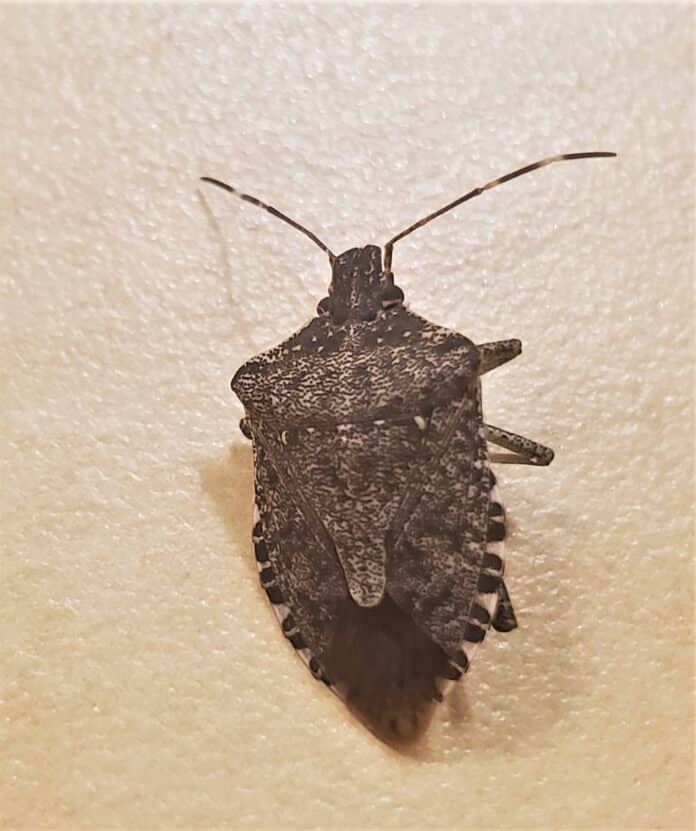
OMAHA, Neb. — The average household has more than 100 different types of arthropods living inside, according to Creighton University Biology Professor Ted Burk, Ph.D., but residents in the Midwest are spotting a new pest inside this winter: the brown marmorated stink bug.

“We have a lot of native stink bugs and they all tend to seek a nice, warm place for the winter. We’ve typically found them on the sides of our house or under the eaves and occasionally inside,” said Burk. “What we’ve seen this year, more than we’ve ever seen before, is a new invasive species, the brown marmorated stink bug.”
Brown marmorated stink bugs, which have a marbled brown and white, five-sided exterior and originate from China, have been working their way across the United States since the early 1990s. They take up residence in houses during the winter, gaining entry through cracks, crevices and fireplaces.
“We’ve got the Asian long-horned beetle, the emerald ash borer. We have the ladybugs that have been invading houses in the last few years. It’s really just a reflection of so much worldwide trade originating in China now that things are being spread all over the world,” said Burk. “This particular species of stink bug has not only gotten into the United States, but it’s also been spreading all throughout Europe and other parts of the world.”
The brown marmorated stink bug is not breeding or feeding inside houses over the winter but does produce a smell when disturbed. While they aren’t causing any major harm inside houses, Burk says this species is resistant to most chemical sprays. He offers the following recommendations to remove them from homes:
- Collect the stink bugs using a vacuum and empty the bag outside.
- Use a homemade trap of a tinfoil roaster pan or similar container. Place an inch of soapy water in the bottom and a desk lamp over the container. Stink bugs are attracted to water and warm spaces and the trap could lure and drown them.
- Focus on the future. Work to caulk or seal any entrances to avoid infestation next fall.
In the eastern region of the United States, thousands of brown marmorated stink bugs can be seen in homes over the winter. Burk says it’s difficult to discern whether the Midwest will see a similar volume.
“This is the first year that we have seen so many of them. Whenever we have a new species arrive, the question is whether what we have now is the amount we’re going to have into the indefinite future, which is probably best-case scenario, or whether this is the front edge of the wave and we’re going to be having thousands and thousands like they do in places like Maryland and Pennsylvania. So, let’s cross our fingers and hope that isn’t the case,” said Burk.
Burk says if the volume does increase, it poses an increasing threat to the U.S. agriculture industry, as over the warmer months, the brown marmorated stink bug is a generalist that has been known to feed on more than 300 different kinds of fruit and vegetable plants, causing damage to crops.
About Creighton University: Creighton University in Omaha, Nebraska, enrolls 4,255 undergraduates and 4,399 graduate and professional students among nine schools and colleges. No other university its size offers students such a comprehensive academic environment with personal attention from faculty mentors. Jesuit and Catholic, it affords incomparable interprofessional education, bridging eight health professions programs with law, business and the arts and sciences – all on one walkable campus. Creighton University ranks in the top third of U.S. News & World Report’s rankings for National Universities.















